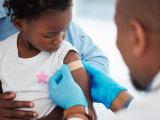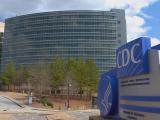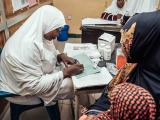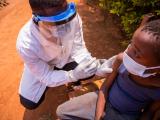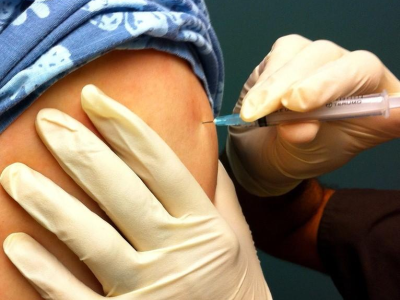Apr 29, 2009 (CIDRAP News) – Top US officials responsible for managing the nation's response to the swine influenza outbreak today faced increasing pressure to implement more aggressive measures at the Mexico border and reveal more details about the status of a vaccine.
Two officials testified at the Senate homeland security hearing: Janet Napolitano, secretary of the Department of Homeland Security (DHS), designated as the lead federal official in influenza epidemic response, and Anne Schuchat, MD, interim deputy director for the Centers for Disease Control and Prevention's (CDC's) science and public health program.
Questions from Senators
Sen Susan Collins, R-Maine, ranking member of the Senate Committee on Homeland Security and Governmental Affairs, praised the government's overall level of preparedness but said the committee has expressed concerns over the past few years about the nation's ability to provide mass medical care, procure needed countermeasures, and coordinate border-related medical issues, such as travelers with multidrug-resistant tuberculosis (MDR TB), between federal departments.
She asked Napolitano about the number of US swine flu cases that have had links to Mexico travel and whether the heavy volume of daily traffic across the border should prompt the DHS to reconsider passive surveillance measures that are in place and evaluate if tools such as temperature scanners could help identify more sick patients at ports of entry. "We should be going beyond routine procedures, given the threat," she said.
"I'm not advocating closing borders," Collins said. "But I am advocating a stepped-up medical presence and use of technology—even if it's not perfect."
Napolitano said so far that the DHS travel recommendations—it has discouraged nonessential travel to Mexico—have been guided by scientific findings and the public health community. She added that though surveillance is called "passive," border control agents visually inspect incoming travelers, question them about symptoms and recent illnesses, and isolate and test those who appear to be sick.
Schuchat told legislators that the focus of mitigation strategies is on where US illnesses are being reported and on patients' families and the communities that surround them. She suggested that greater efforts at the border might divert from those efforts.
CDC officials have also said that containment strategies aren't workable, because the virus has already spread extensively.
Sen John McCain, R-Ariz., asked the officials if they could foresee a situation in which the Mexican border would be closed to prevent further spread of the disease.
Schuchat said she couldn't picture a scenario that would warrant such a closure.
However, Sen John Tester, D-Mont., said he supported the medical literature guidance on the efficacy of border closures. "I agree we need to let science lead the way," he said.
Sen Lindsay Graham, R-S.C., pointed out that, with the coming growing season, guest workers will be coming across the border from Mexico, a crucial element of the US farming sector. He asked if the DHS has any protocols in place for screening the guest workers.
Napolitano said currently, the guest workers are treated the same as travelers, but she said it might be reasonable to consider more intensive screening.
Vaccine progress
Lawmakers asked how the CDC was progressing with preparing a vaccine against the H1N1 swine flu virus. Schuchat said that if every step goes smoothly with production and testing, a vaccine could be ready by September. However, she said vaccine production can be problematic.
The vaccine against the H5N1 avian influenza virus has been somewhat disappointing, because a large amount of antigen is needed for a protective effect, and two doses are needed. Also, Schuchat said some flu viruses don't grow very well during production.
She said the decision about making a vaccine and giving the vaccine will be two separate decisions, both with many factors to weigh, particularly given the problems that occurred with the vaccine during the 1976 swine influenza outbreak. "It's humbling to look at the complexity of the decision making. You have to look at all sides: health, social, economic."
"We hope to step back and seek wise counsel from dissenting views," she said, adding that the CDC has a groups called "team B" that are tasked with identifying problems with CDC policy approaches.
Napolitano said President Obama's $1.5 billion request to the Senate appropriations committee includes money for vaccines, more antivirals, and public health activities. "That's a rough estimate gauged on perhaps having to purchase more antivirals. The initial request from the president will be sculpted to be best used," she said.



